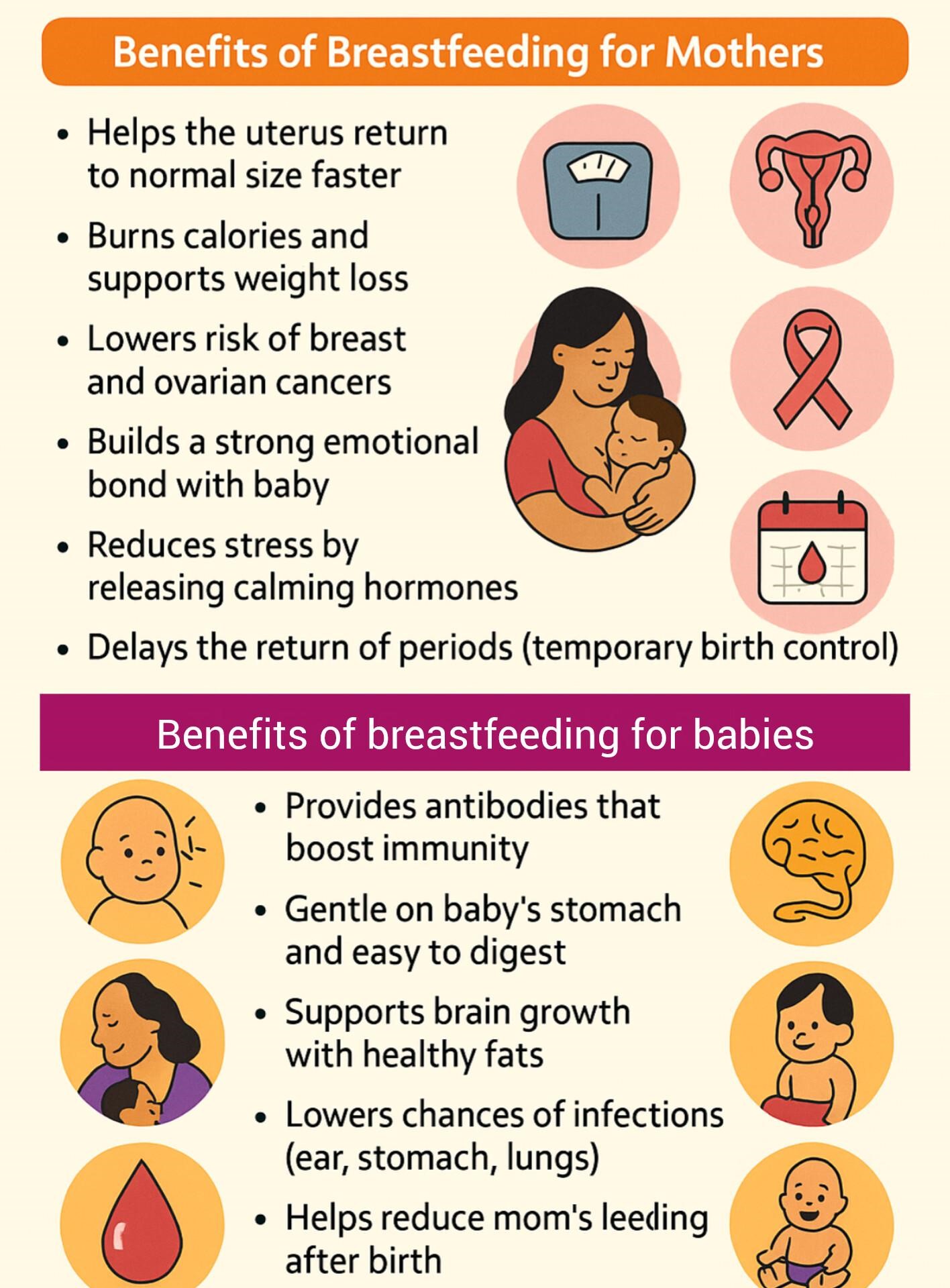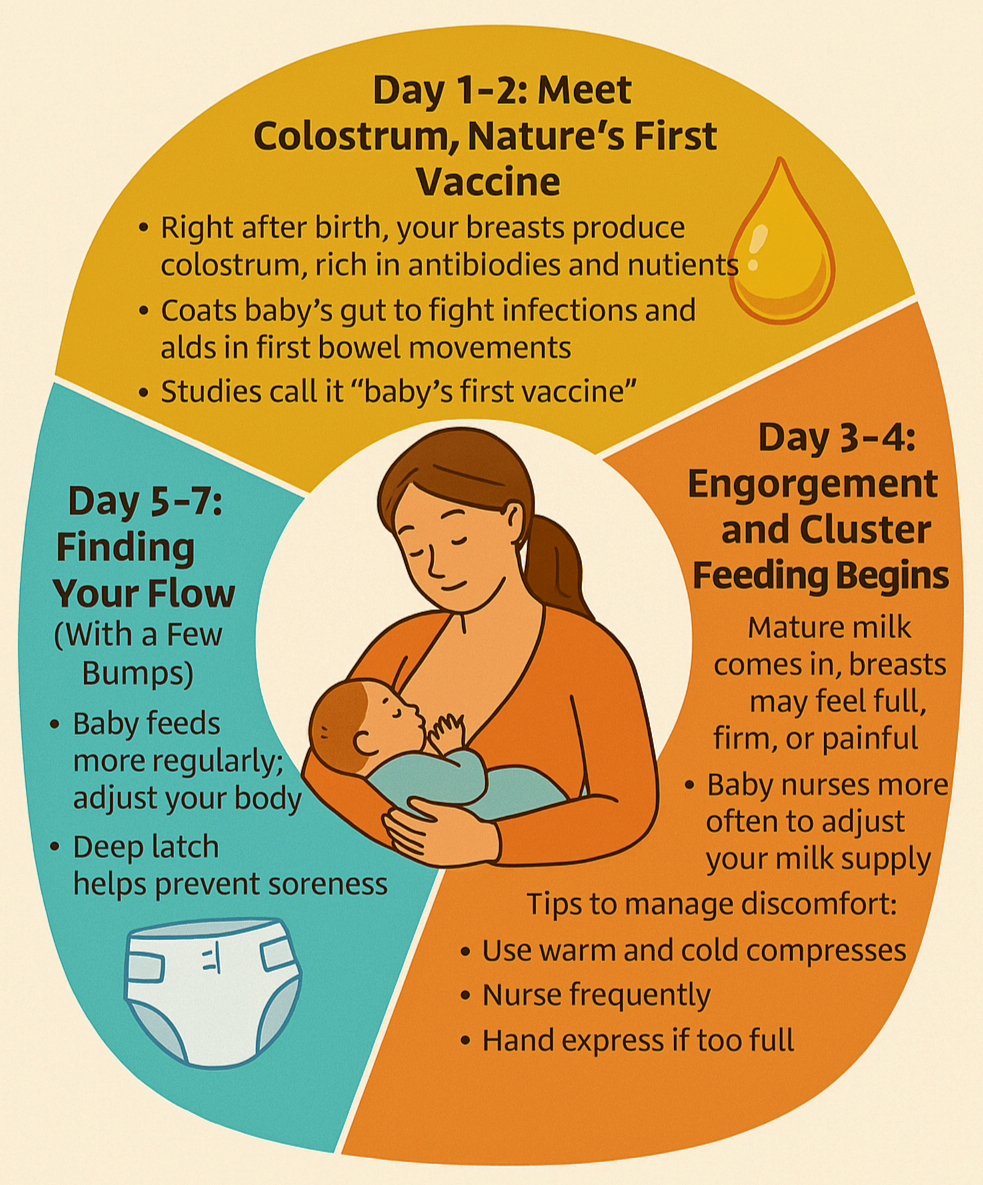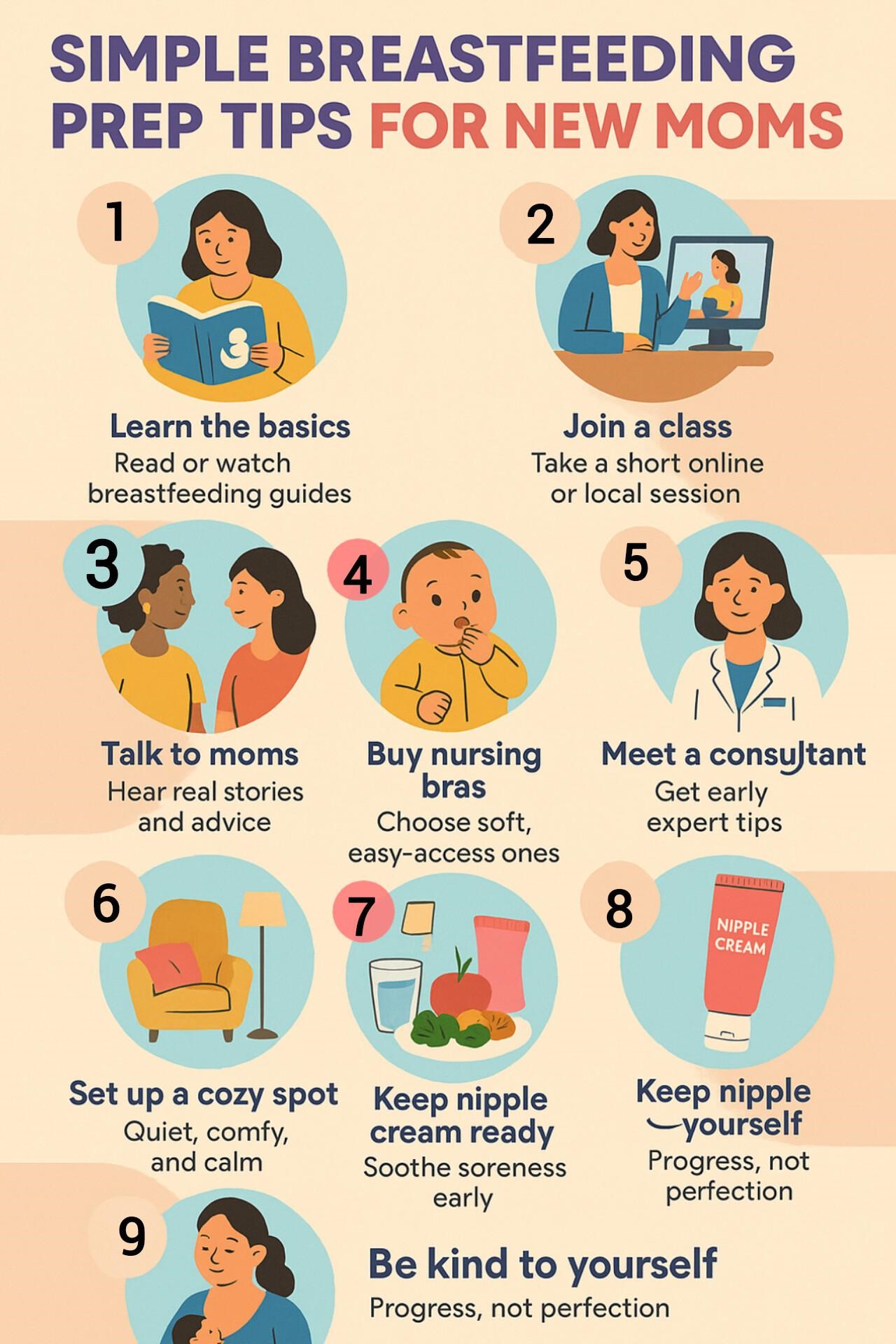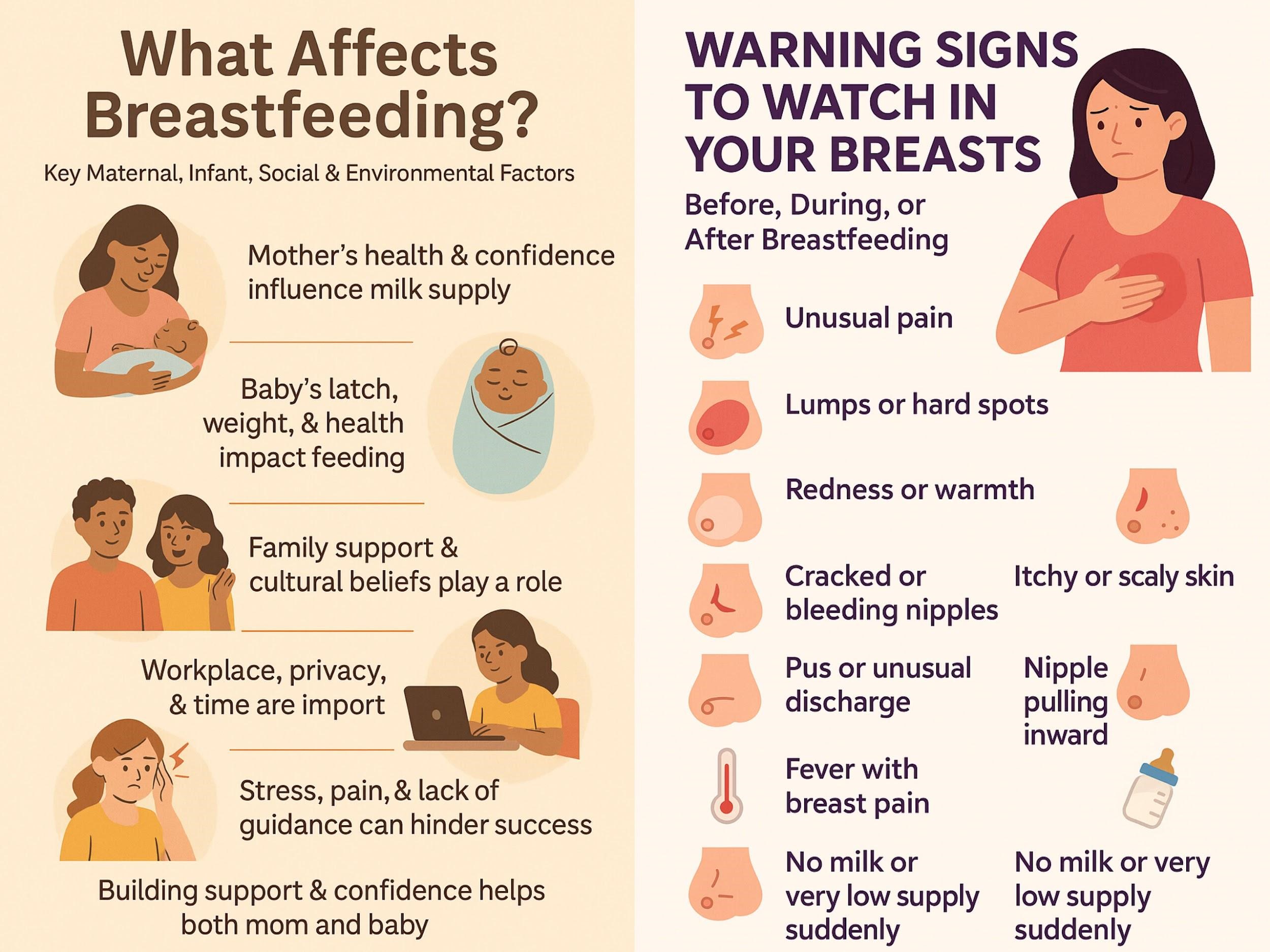By Nutriworld | Dt. Dipanwita Saha
Breastfeeding is natural, but the first week can be tough. Many new moms face sore nipples, constant feeding, and latch issues. It’s normal to feel overwhelmed. But you’re not alone—these early days are hard yet important. They build your baby’s immunity, your bond, and your confidence. This guide shares honest, science-backed tips and gentle support to help you through the first 7 days.

▲ Day 1-2: Meet Colostrum, Nature's First Vaccine
Right after birth, your breasts produce colostrum, a thick-golden-yellowish fluid rich in antibodies, proteins, nutrients and vitamins. That is often called “Liquid Gold”. It’s small in amount but mighty in benefits.
- Colostrum coats your baby’s gut to fight infections.
- It’s easy for newborns to digest and helps with first bowel movements (meconium).
- Studies (WHO & UNICEF) call it “baby’s first vaccine” for a reason.
Don’t stress about how little comes out-their tummy is just the size of a cherry at birth. Encourage moms and assure them.
▲ Day 3-4: Engorgement and Cluster Feeding Begins
Around Day 3, your mature milk starts to come in. Your breasts may feel full, firm, even painful. This is known as engorgement, and it’s completely normal. During this time, your baby may seem to nurse constantly-this is called cluster feeding, and it’s their way of helping your body adjust the milk supply.
Tips to manage discomfort:
- Use warm compresses before feeding
- Apply cold packs after
- Nurse frequently (every 2-3 hours)
If your baby struggles to latch due to breast fullness, hand express a little milk to soften the area first.

▲ Day 5-7: Finding Your Flow (With a Few Bumps)
By now, the baby is feeding more regularly, and your body is adjusting. But soreness, fatigue, or cracked nipples may still be lingering.
- A deep latch is key to preventing nipple damage
- You should hear your baby swallowing, not just sucking
- Baby should have 6+ wet diapers/day-a great sign they’re getting enough milk
Don’t suffer in silence. If pain continues, seek help-it’s not meant to hurt every time.
▲When, How, and How Often to Feed Your Newborn❓
- Start early – Begin within the first hour after birth if possible. Don’t ever skip the colostrum to feed the baby.
- Feed on demand – Watch baby’s hunger cues like sucking hands or rooting.
- 8-12 feeds a day – Newborns need frequent feeding, day and night.
- Let the baby lead – Offer one breast, then the other if the baby is still hungry.
- Proper latch matters – The baby’s mouth should cover most of the areola, not just the nipple.
- Look for signs – Wet diapers and soft breasts after feeding mean it’s going well.
Trust your instincts and follow the baby’s rhythm.

▲ How Breastfeeding Supports a Healthier Planet Naturally
- No packaging or waste-breast milk is eco-friendly and zero waste.
- Cuts down on formula production, which uses water, energy, and fuel.
- Reduces need for plastic bottles, cans, and transport pollution.
- Saves natural resources used in manufacturing and shipping.
- Supports sustainable food systems from the very beginning.
Breastfeeding isn’t just healthy for babies-it’s a natural, low-impact way to care for the Earth too.

Factors Affecting of Breastfeeding and, Signs of Breast Abnormality

Conclusion: Trust the Process-You're Doing Better Than You Think
The first week of breastfeeding can feel intense—emotional, tiring, and sometimes painful. But every drop matters. Colostrum boosts your baby’s immunity, and each feed builds your strength. It’s okay to feel unsure. Ask for help, rest when you can, and remember—this is a learning journey, not a test. You’re doing great.
FAQs:
1. Is it normal for breastfeeding to hurt at first?
Yes, some soreness is common. But if the pain lasts or worsens, the latch may need adjustment.
2. Can I still breastfeed if I have flat or inverted nipples?
Yes, a lactation consultant can guide you through techniques or tools that help.
3. What if my milk hasn't come in by day - 3?
Keep nursing frequently, stay hydrated, and seek lactation support. Every mom’s timeline is different.
4. When should I ask for breastfeeding help?
If it hurts, feels overwhelming, or you’re unsure about the baby’s latch or weight gain-ask early. Don’t wait.
5. Can I still breastfeed if I had a C-section?
Absolutely. You may need help with comfortable positioning, but C-section moms can breastfeed just as successfully.
By, Priyanka Das Nutrition Content Writing Intern [ Nutri World ]


